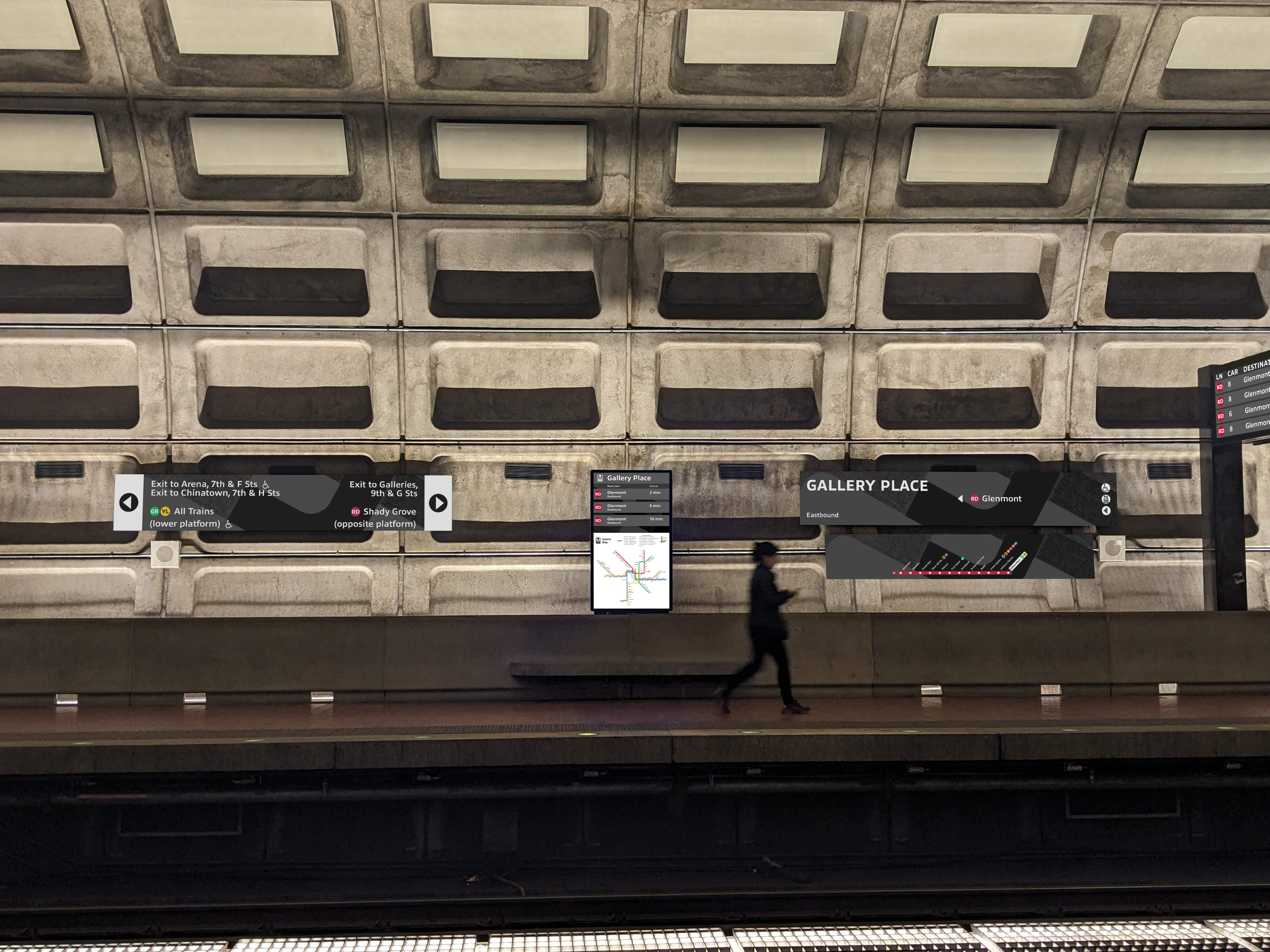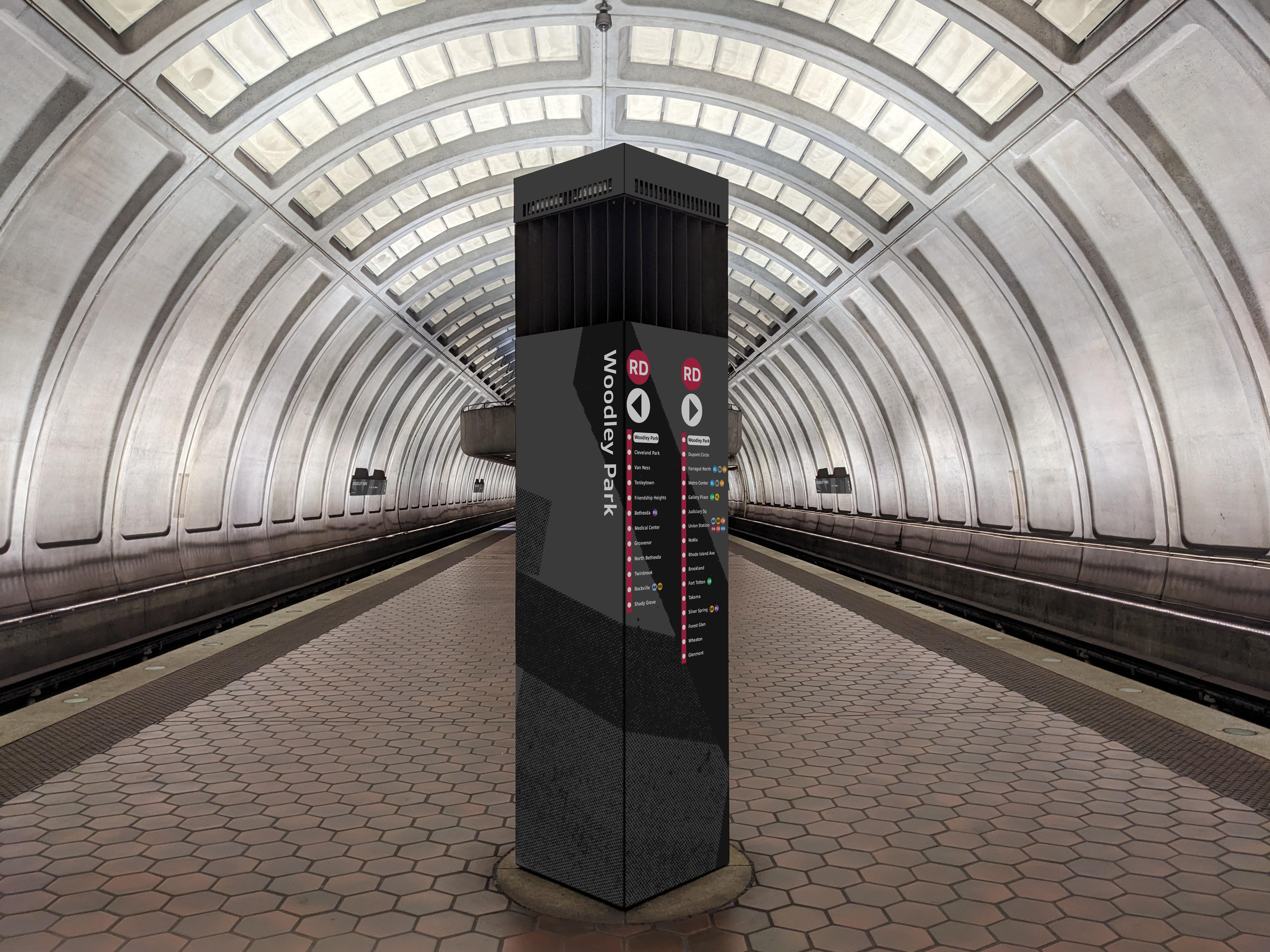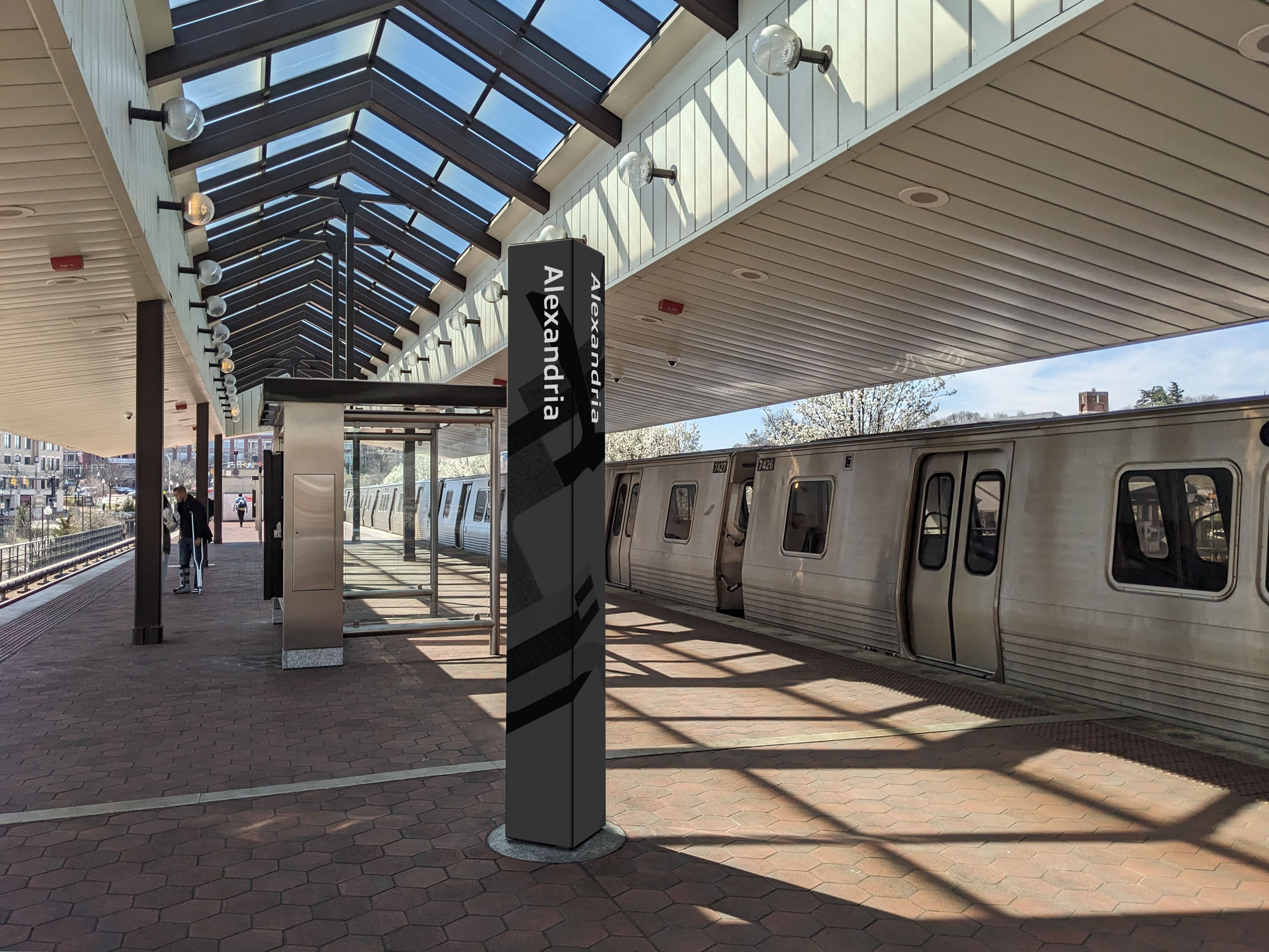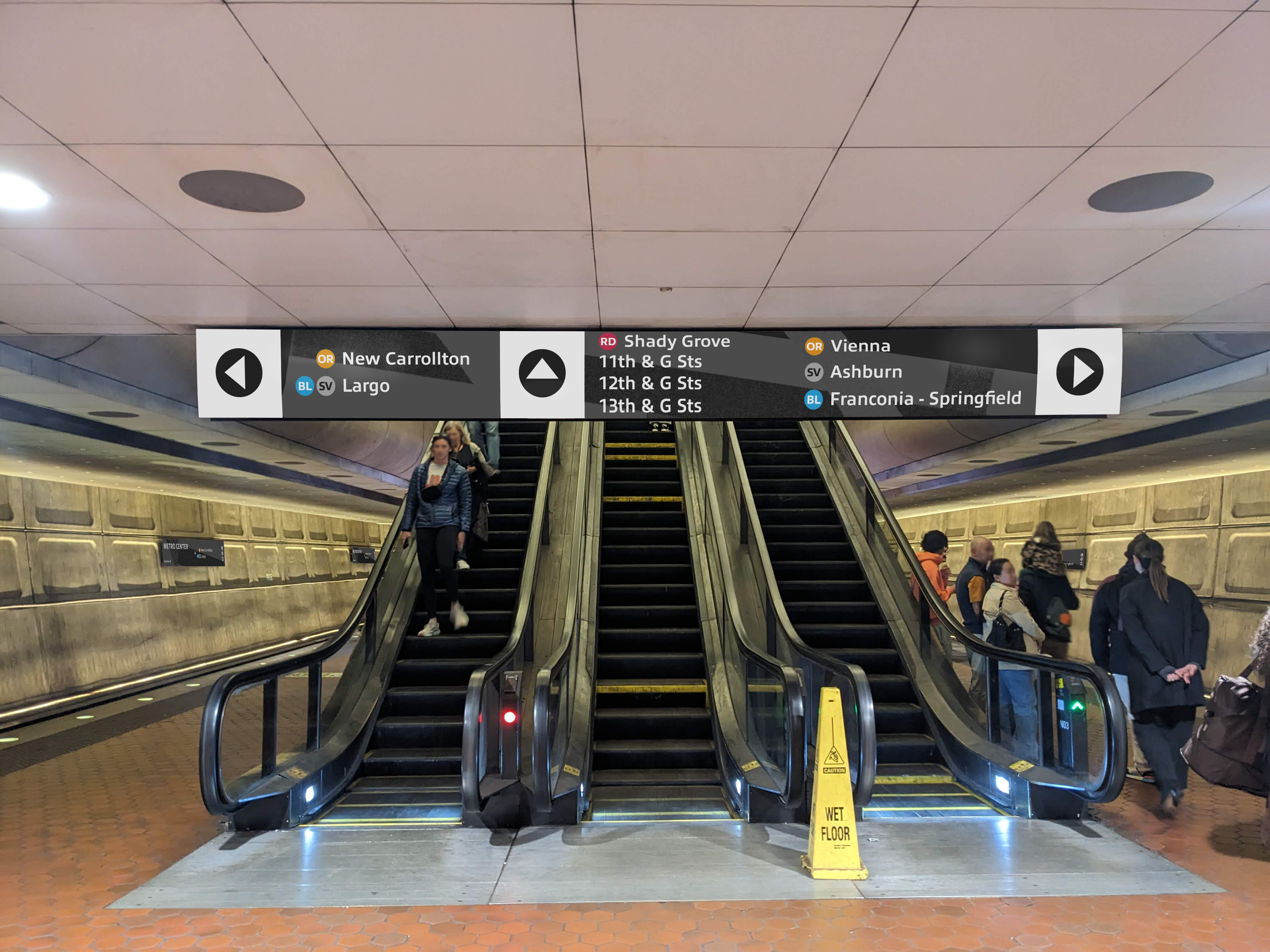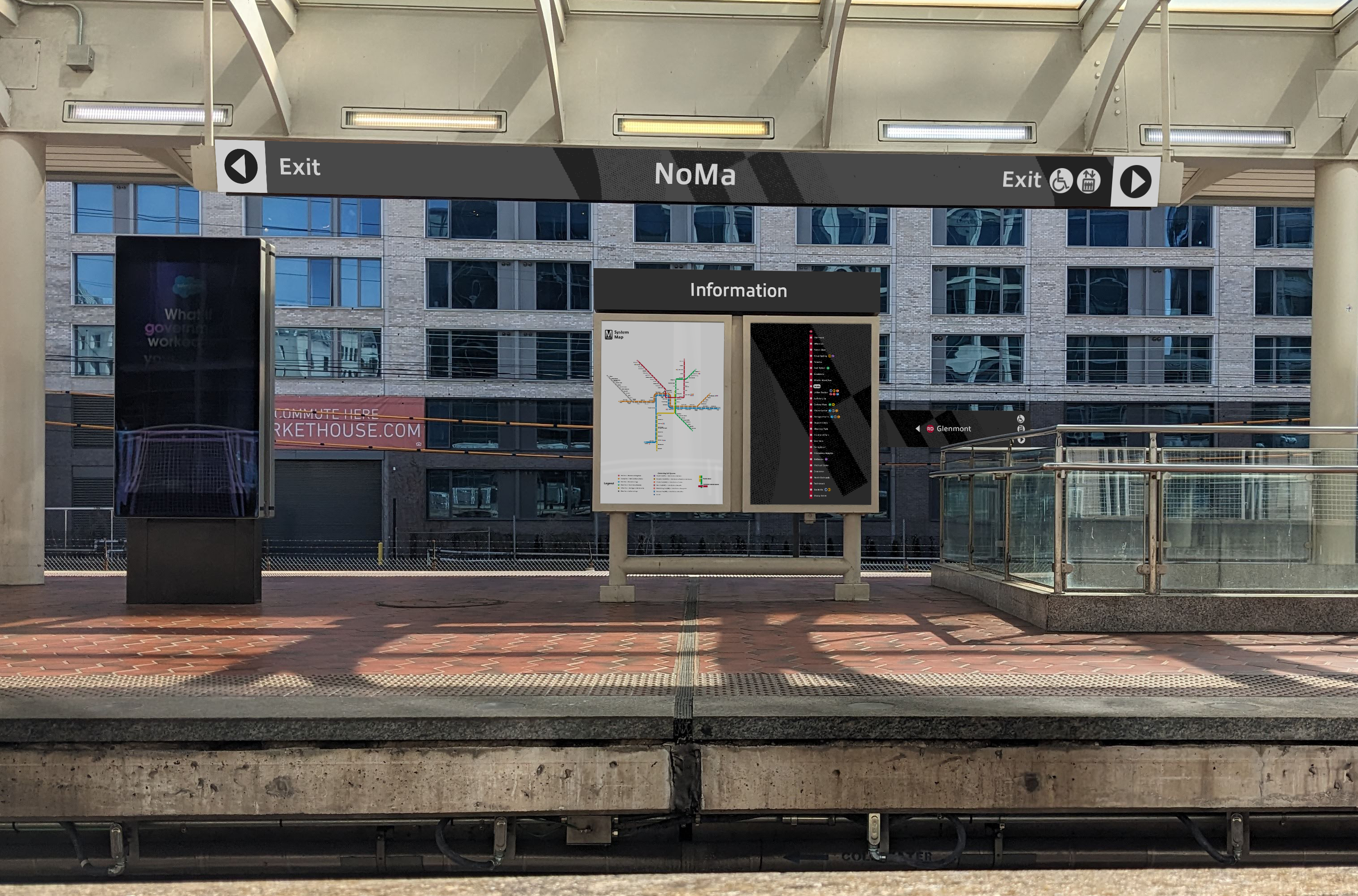Washington Metrorail Wayfinding
2025
This project is a comprehensive redesign of the wayfinding for the Washington, DC Metrorail system. The system is known for its unique Brutalist architecture, but over the years as the system has expanded and modernized, the wayfinding has lost its connection with the iconic architecture. Modern attempts at revamping the graphics have turned out inconsistent, poorly designed, and confusing to the average traveler.
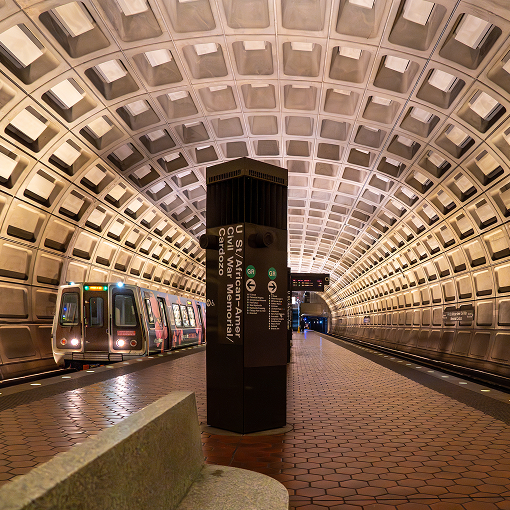
This redesign borrows a number of design concepts from the official system, but with a slight twist. The chosen typeface is Allumi Std, a sans-serif font similar to the official Helvetica but with a little more character. The line color symbols and Metro logo remain key elements of the system but use the updated typeface.
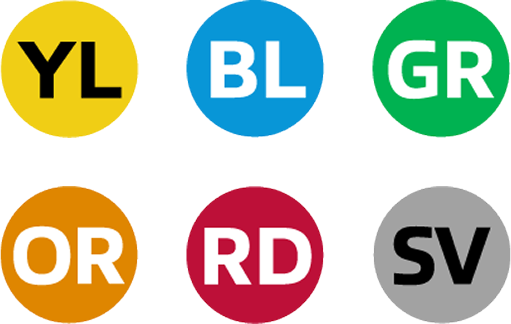
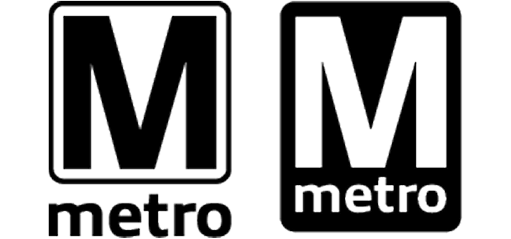
The background for all of the station-specific signs is this collage of lines from my previous rail map project. The idea is that each station has its own cropping of the collage that is used on all signage throughout the station. This adds movement and texture to the signage without taking away too much from the clean and legible nature of the wayfinding.

The new signs currently being piloted by WMATA use cardinal directions just as much or more than they use train destinations. While this is helpful to tourists and others unfamiliar with the system, it adds unnecessary confusion when lines change direction, and destinations are displayed on in-train signage, not directions.
The redesigned signs return to using train destinations for primary direction identification, but also include cardinal directions to aid those needing additional orientation.

The large “M” pylons remain the key identifier of Metro stations, with the adjusted font and added background texture treatment.
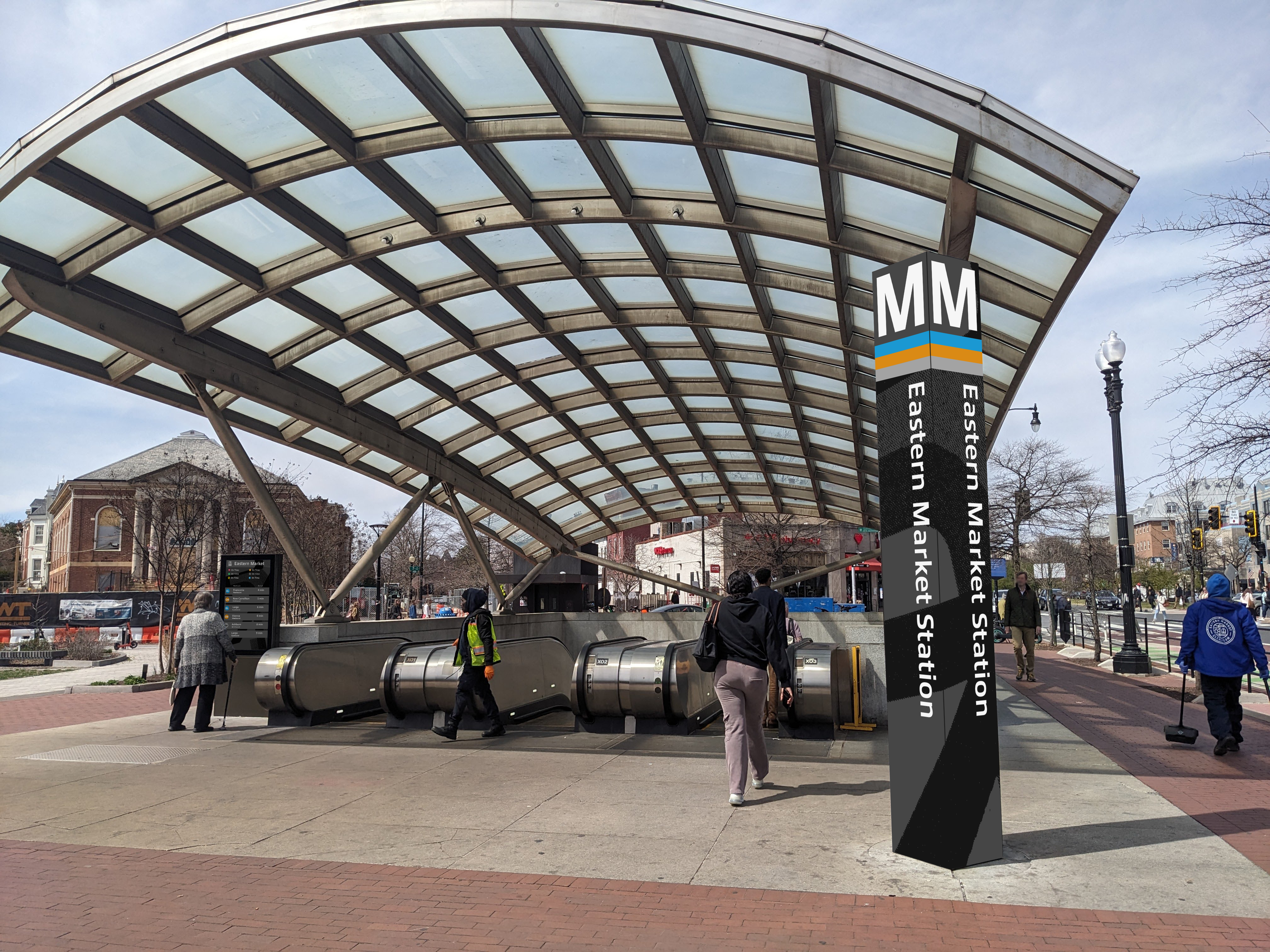
The background pattern treatment also works in situations without text, such as these mezzanine pylons.

While not a part of the Metrorail system, connecting rail services such as intercity and commuter rail also have line symbols in the same style, which provide consistency and allow for a possible expansion of the design system.
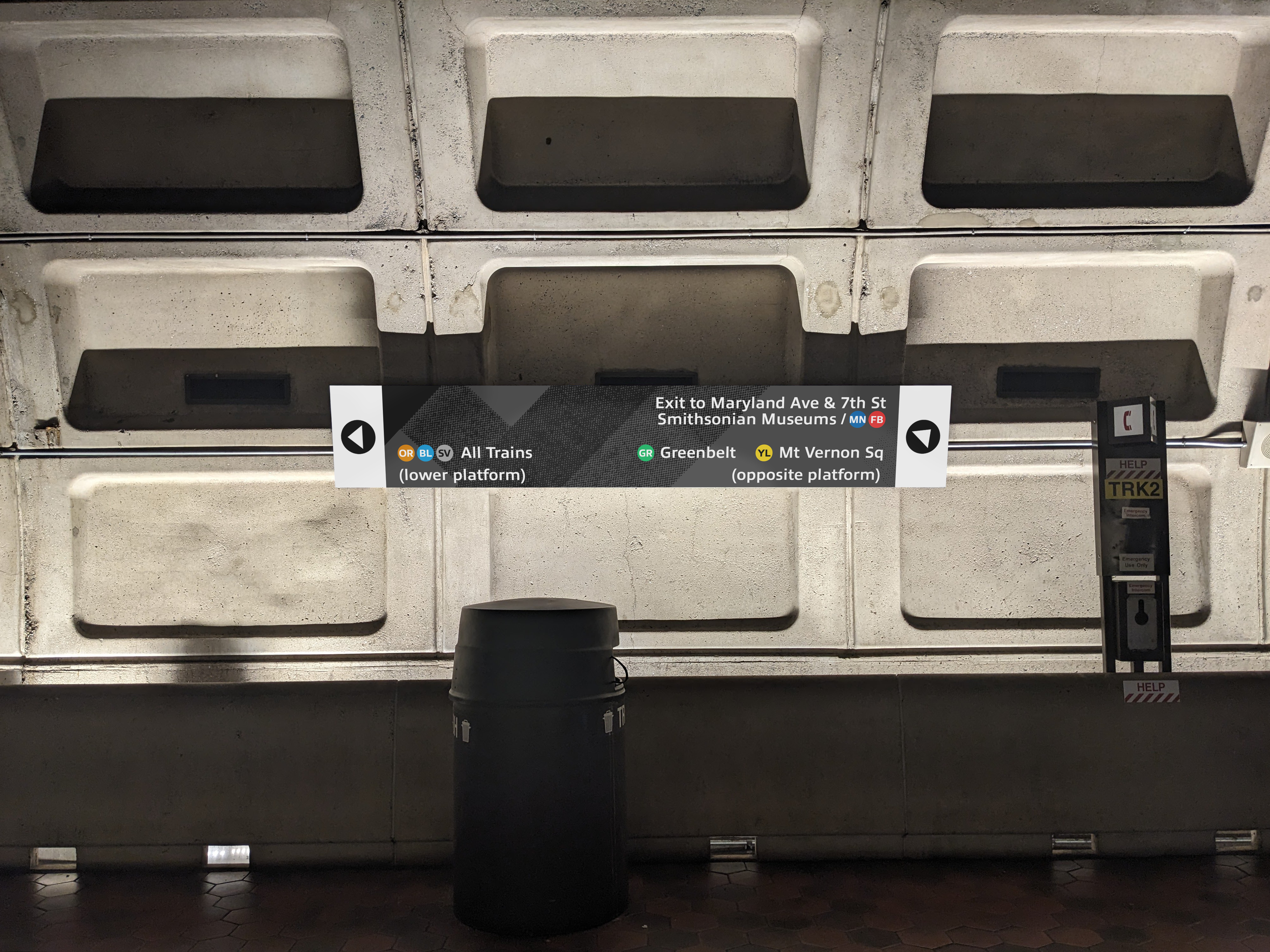
Digital signage is used to provide passengers with real-time service alerts and train arrivals.
